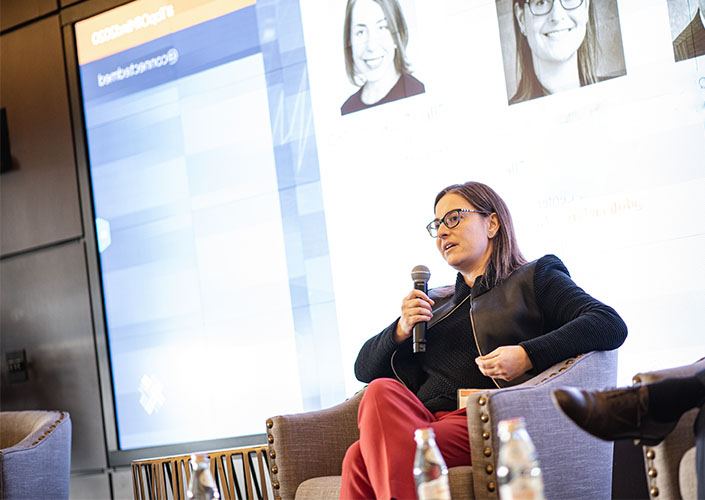Chief Innovation Officer says optimizing workflows makes appointment times ‘mean something’
There are few things more frustrating for patients than to show up on-time for an appointment with their doctor only to wait a long time to be seen.
Health systems and providers increasingly realize these waits lead to a poor patient experience and are taking steps to improve.
Rebecca Kaul, Vice President and Chief Innovation Officer at University of Texas MD Anderson Cancer Center, discussed the role of optimizing workflows to improve the patient experience during an interview with the Center of Connected Medicine (CCM). Watch a video of the interview below.
How MD Anderson Cancer Center uses technology to improve patient experience
MD Anderson Cancer Center is approaching the patient experience with digital tools that help the center create more efficient patient flow and better patient scheduling, Kaul said.
The center uses optimization technology that allows it to reduce wait times and create a better patient experience. Kaul previously discussed the use of a technology vendor to apply machine learning to its workflows and scheduling – resulting in higher satisfaction.
“And what that has enabled for our patients is a reduction in wait times, a reduction in the end-to-end time a patient is with us and really make an appointment time mean something,” Kaul said. “So, when we say we’re going to see you at 2:00, 2:00 it is.”
While Kaul was interviewed in December 2019, the need to efficiently move patients through clinical settings to allow for social distancing is likely even more important due to COVID-19.
Long wait times a top concern at health systems
Long wait times have been a patient complaint for many years. Research has found that the average wait time in a clinician practice is 20 minutes and patients use average appointment wait times as one deciding factor when choosing a new clinician, according to Patient Engagement HIT.
Improving wait times is becoming a major focus of health systems in part because patient frustration with long waits can be reflected in providers’ patient satisfaction scores. But average wait times are improving, Patient Engagement HIT reports.
At a previous Top of Mind Summit, Stacey Chang, Executive Director of the Design Institute for Health at The University of Texas at Austin, talked about optimizing the patient journey, which resulted in elimination of the traditional waiting room.
About Rebecca Kaul
As Chief Innovation Officer, Kaul leads an Innovation Center designed to identify creative and effective approaches for delivering exceptional patient outcomes and bring new solutions to market. By collaborating with internal innovators and establishing strategic relationship with startups and industry, Rebecca and her team are accelerating value generation and commercialization, according to MD Anderson.
Kaul previously served as Chief Innovation Officer and President of UPMC’s Technology Development Center, which is now UPMC Enterprises. She has a Master of Business Administration degree from New York University and has earned multiple degrees from Carnegie Mellon University: master of information systems management, bachelor of science in chemical engineering and engineering and public policy.
Kaul was named one of the 75 Most Powerful Women in Healthcare for 2017 by Health Data Management.
More on digital health tools from the CCM
Watch our webinar on-demand and hear from health system and technology leaders about how providers are leveraging digital tools as in-person services expand.
Learn about how CCM partner UPMC ramped up telemedicine to address patient care during the pandemic.
And find out from a UPMC executive why health systems must prioritize the digital patient experience.



